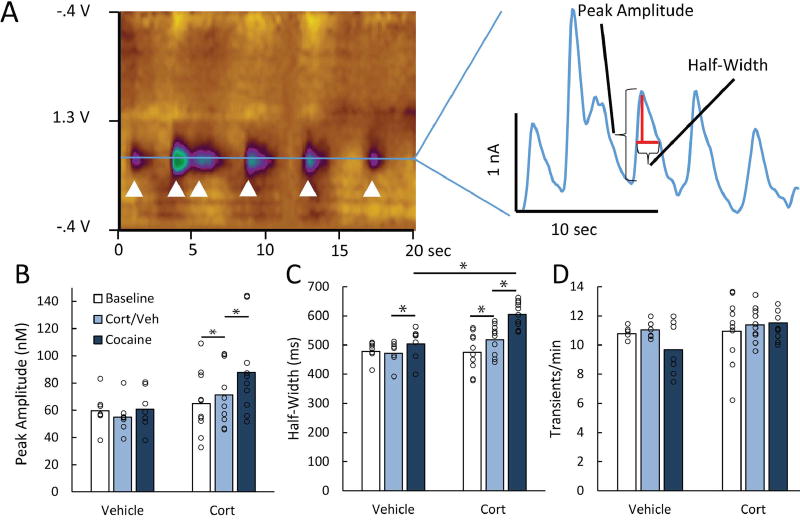Figure 3.
Corticosterone selectively affects uptake-sensitive characteristics of DA transients. A) The colorplot (left) depicts DA transients in one subject. The white arrows identify 6 transients that occurred over 20 s. The line graph (right) isolates the current at DA’s oxidation potential and depicts the uptake-sensitive measures of spontaneous DA transients (amplitude and half-width). B) Means showing the average transient amplitude (nM) during the different phases of the experiment for vehicle and corticosterone (Cort) injected subjects. Open circles show data for individual subjects. Transient amplitude increased after corticosterone administration (p < .007), and increased further after cocaine administration (p < .005). C) Average transient half-width (ms). Half-width increased after corticosterone administration (p < .001), and increased further after cocaine administration (p < .001). Cocaine did have an effect on half-width after vehicle administration (p < .03), but the effect of cocaine was larger when administered after corticosterone (p < .001). D) Average transient frequency (counts/min). Transient frequency was unaffected by vehicle, corticosterone, and cocaine administration, indicating that corticosterone and cocaine selectively affected DA clearance (ps > .07).

